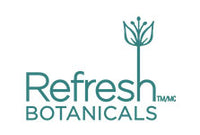Whether you’ve just started with skincare or you’re that one friend everyone texts for advice, we’re willing to bet you’re familiar with this gold standard antioxidant which is so ubiquitous in skin-brightening products that even a child these days would know about it, and it’s none other than Vitamin C!
Instrumental in skin firming and collagen production, it’s one of the most powerful topical ingredients that protect the skin against free radical damage, UV light, and other environmental aggressors – making it look brighter, smoother, and plumper over time. If you haven’t yet incorporated Vitamin C into your routine, keep reading to know more about it and the most effective ways to use it.
The Right Color
When choosing your Vitamin C product, especially a serum, it’s important to make sure it’s colorless. Although some highly concentrated serums do have a natural yellow tint, but the problem is when a product starts oxidizing and changes its original color – turns to brown or orange usually.
You can still use it, but it won’t have the same benefits. That’s the reason why it’s suggested to choose airtight packaging and a dark-colored bottle, rather than something that comes in clear packaging and is exposed to the light regularly. This can affect the effectiveness of the product and make it less usable.
The Concentration
The concentration or the percentage amount of Vitamin C in a product can be anywhere between 1 to 20 percent, but it’s always suggested to start with a mild dose, around 5 percent.
As per the dermatologists, you can gradually build up this concentration, but after 20 percent, the situation is like a plateau, which means raising the concentration might not give you any greater benefits.
Also Read - Why Certified Organic Skincare is the Right Choice for Sensitive Skin
Moreover, after a certain point, if you go above the bar, your skin can develop sensitivity to the same ingredient that was once working great for you, so it’s always better to keep things balanced and stay consistent with what suits you the best.
The Derivatives
One of the most debatable topic amongst the skincare enthusiasts is – which form of Vitamin C works the best. Well, there’s no definite answer to it because it is actually subjective, totally depends on your skin type and tolerance.
But of course, some derivatives are more stable than others, which means they are more efficacious, like the magnesium ascorbyl phosphate, ascorbyl 6-palmitate, and ascorbic acid sulfate.
The form of derivative which is more common and somewhat similar to the ascorbic acid sulfate is L-ascorbic acid – the safest to start with. Usually, dermatologists recommend L-ascorbic acid for oily or normal skin and magnesium ascorbyl phosphate for dry and sensitive skin.
Most Importantly
Start slow. Don’t try to jump straight on to the highest concentrations thinking it would give better and quicker results, slowly incorporate it into your routine and give it the time it needs to settle in completely.
It may take several weeks to see the slightest improvement, don’t expect instant gratification. The most potent forms of Vitamin C are vulnerable to sun exposure, and therefore it’s important to layer it underneath a broad spectrum sunscreen, minimum SPF 30.
If you are still a little unsure about how and where to start from, consider trying something with natural ingredients first.
A product with an organic blend of oils and extracts scientifically stabilized in a well-crafted formulation. Also, it’s better to begin with a product that isn’t as powerful as a serum but is equally effective and important – a Moisturizer.
If you’re looking for an effective Vitamin C moisturizer, then you must try the Neroli and Grapefruit facial moisturizer from Refresh Botanicals. Refresh Botanicals’ products are made with advanced technologies like micro-emulsion and nano-encapsulation, that help to deliver the concentrated ingredient to the targeted area. If you’re thinking to switch to organic skincare, then you must try them once.
Also Read - Best Face Products for Men





















